
What To Do If Your Car Breaks Down
By Anna Jones at Eversure,
3rd February 2025, 20 min read
Breaking down is disconcerting, frightening and frustrating. Make sure you are well prepared by getting breakdown cover today. If you do unfortunately experience car trouble, then it is important that you remain calm and reach a place of safety – this may mean leaving your car.
This is an in-depth guide to help you deal with breakdown, featuring specific advice from all types of roads in the UK including motorways and smart motorways.
Places you may breakdown:
I've broken down. What do I do?
1. Stay calm
Take a deep breath to remain calm and assess the situation. Your safety is top priority.
2. Be mindful of other road users
Pay attention to traffic around you and make sure you minimise risk to yourself and others.
3. Turn on your hazard lights
Signal your situation by turning on your hazard lights to immediately alert other drivers.
4. Leave the car by the left-hand door
Exit your vehicle safely by leaving the car using the left-hand (passenger side) door to avoid stepping into traffic. The driver will need to climb over into the passenger seat to get out.
Stay a safe distance from your vehicle and moving traffic – ideally behind a barrier (if available), on the embankment, or on the verge, positioned upstream of oncoming traffic. Be mindful that the grass verge may be soft or uneven, so take care when walking on it.
5. Make sure you are either wearing light coloured clothes, or a hi-vis vest
Enhance your visibility by wearing light coloured clothing or a high-visibility vest, especially in poor lighting conditions or at night.
6. Place your warning triangle
Take your warning triangle and place it approximately 45 metres (147 feet or about 60 paces) behind your vehicle. Important: Do not place the triangle on a motorway as this is unsafe.
7. Keep sidelights switched on
If visibility is poor or you’re stood waiting for help at night, keep your sidelights switched on. Make sure your lights are visible to other drivers and are not obstructed.
8. Contact breakdown assistance
Once you have taken the above the steps, contact your breakdown service. Use the contact information provided in your policy documents.
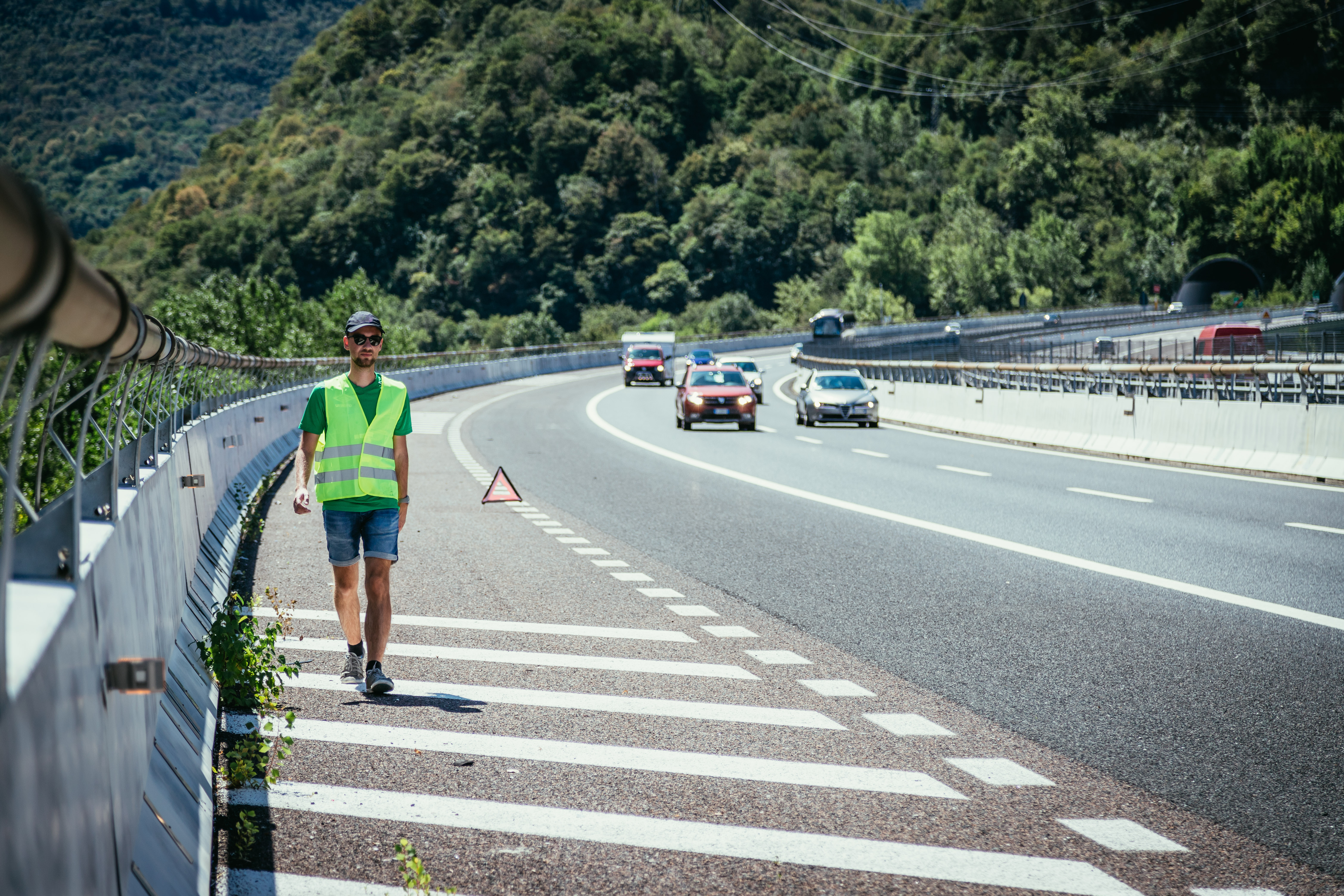
I’ve broken down on a motorway. What do I do?
1. Leave the motorway if possible
If you are able to and it’s safe to do so, leave the motorway at the nearest exit. This will make it easier for recovery vehicles to get to you.
If this is not possible, pull over safely instead. Move your car onto the hard shoulder and stop as far to the left as possible. Turn your wheels to the left too.
2. Safely exit your vehicle and stay away from traffic
Turn on your hazards immediately to alert other drivers. If it is nighttime or visibility is low, also turn on your sidelights.
Make sure you and your passengers leave the car using the left-hand door to avoid oncoming traffic. The driver will need to climb over into the passenger seat to get out.
If you have them, put on hi-vis jackets to increase your visibility.
Climb over the safety barriers to distance yourself from passing traffic.
According to the Highway Code, you should leave any animals in your vehicle. On hot days, roll the window down to provide them with some air. In emergencies, they must be properly controlled and on a short lead (as specified in Rule 56).
3. Ring your breakdown provider
If you cannot use your own phone, locate an emergency phone on the motorway. Follow the arrows on the posts along the hard shoulder barrier to find the nearest one.
Breakdown companies can assist you even without cover, but it will be more expensive. To prevent this and avoid unexpected expenses, secure breakdown cover in advance with us today.
What if I can't get to the hard shoulder?
If you cannot get to the hard shoulder, follow these steps:
- Move to the leftmost lane as possible.
- Stay inside with your seatbelts fastened.
- Only exit the vehicle if it safe to get completely clear of the carriageway.
- Do not attempt to place a warning triangle as it could put you in danger.
- First dial 999.
- Contact your breakdown provider using the details in your policy documents.
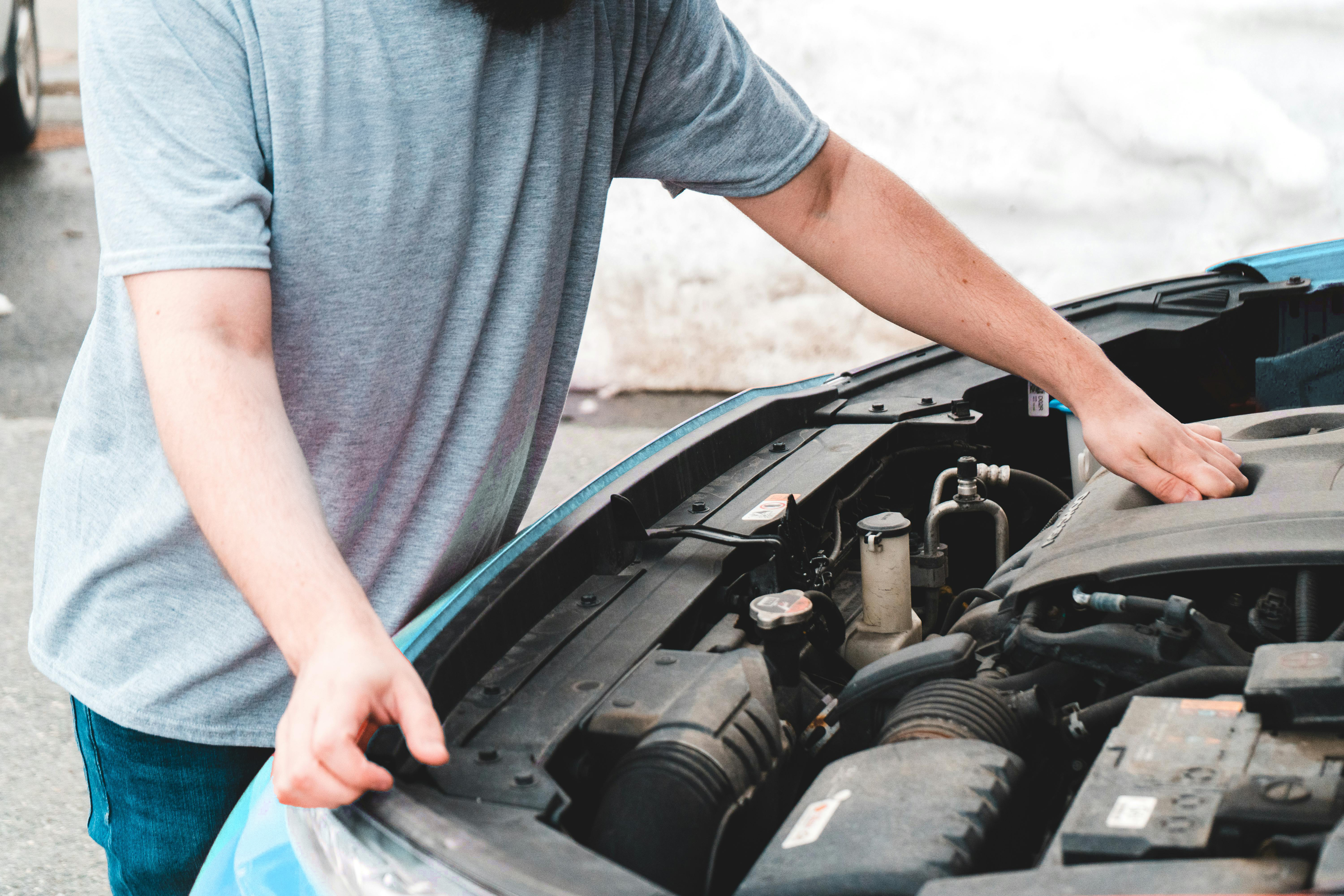
I’ve broken down on a smart motorway. What do I do?
Smart motorways have Emergency Refuge Areas (ERAs) located every 1.5miles. These are designated spaces that replace the traditional hard shoulder and may be used as an active traffic lane at times. Whilst ERAs offer a safe place to stop during an emergency, there may be instances where your vehicle breaks down on a section of road without access to an ERA.
The same logic applies to breaking down on a smart motorway as it does to breaking down on a normal motorway:
1. Exit the motorway if possible
If it is safe, leave the motorway at the nearest exit.
If you can’t do this, try to reach the next ERA. Upon reaching an ERA, use the SOS phone to contact Highways England and report the issue. Assistance will then be arranged.
If you need to stop in an ERA, position your vehicle within the marked boundaries, ideally aligned with the emergency telephone. This ensures that assistance vehicles can park either behind or ahead of you as needed.
Before leaving the ERA, once your vehicle is repaired, contact the Regional Control Centre using the emergency telephone to request that the lane be closed for your safety. The lane must be closed because ERAs do not provide enough space for vehicles to safely accelerate before rejoining the motorway.
Never attempt to leave the ERA unless you have been advised it is safe to do so by National Highways or your breakdown provider.
If you can’t do either of these things, get as far across to the left-hand side of the motorway as possible.
2. Turn on your hazard lights and sidelights if visibility is poor
3. Exit from the left of the vehicle
4. Wait behind the barrier and call your breakdown provider
5. If you have broken down in live lane and cannot safely exit, stay inside with your seatbelt on and ring 999
Smart motorways are equipped with CCTV to detect breakdowns. If your vehicle is identified, the lane you are in will typically be closed to traffic, and rescue vehicles will be dispatched promptly to assist you.
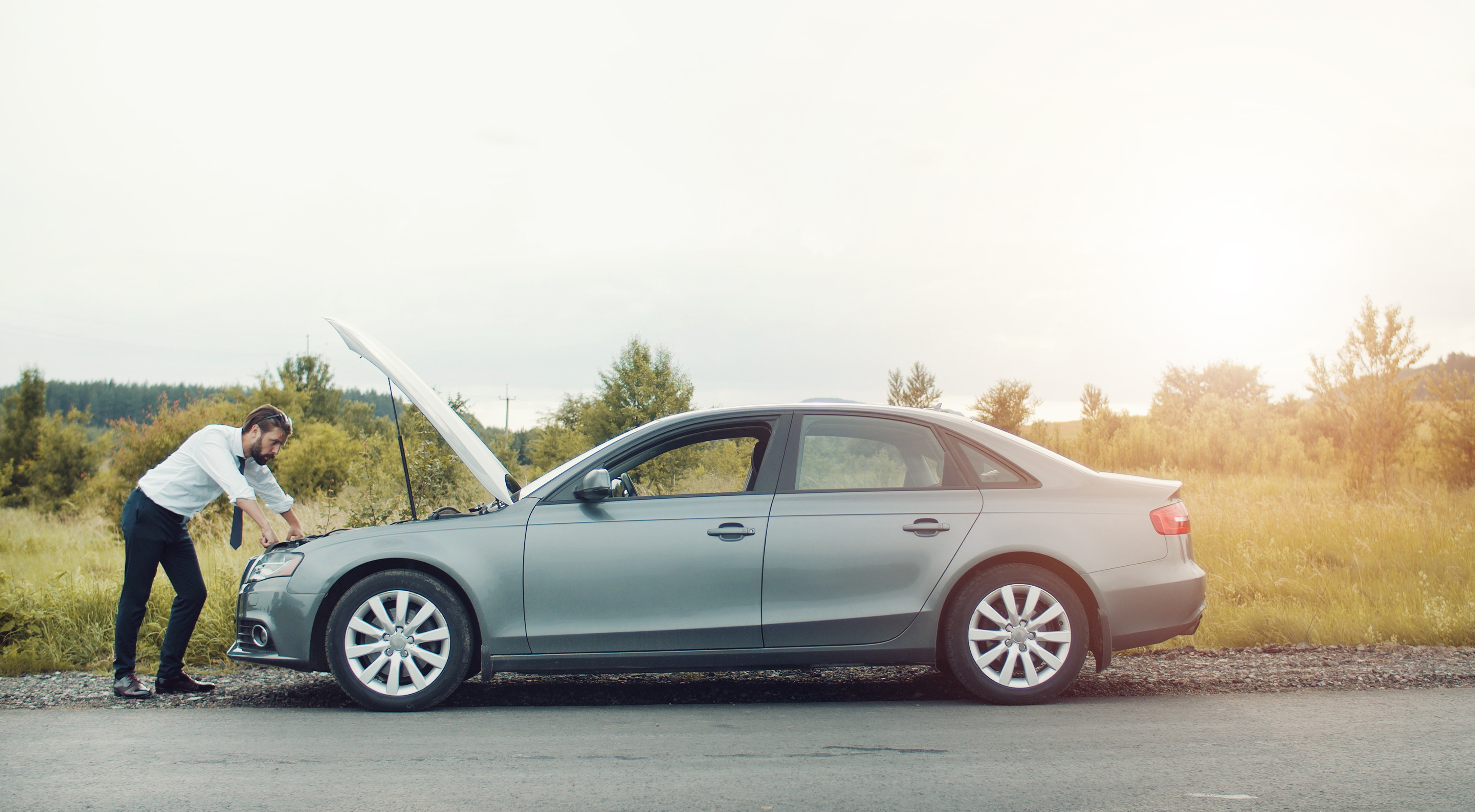
I've broken down on a country lane. What do I do?
Although breaking down on a country lane can be scary, it is one of the safest places to be stranded. Here is what you should do:
1. Pull over safely
If you are able to, pull over as far to the side of the lane as possible to avoid blocking traffic.
2. Turn on hazard lights
Turn on your hazard lights to alert other drivers. If it dark or of there is low visibility, turn on your sidelights too.
3. Place a warning triangle
If it is safe to do so, place the triangle 30 to 45 metre (100 to 150 feet or about 60 paces) behind your vehicle to alert approaching drivers.
4. Move to a safe location
If there is space to stand off the road then do so. Put on a high-vis jacket as well to make you more visible to oncoming traffic.
Stay inside the car if it's safe
If you are not blocking traffic, it is often safest to remain inside your vehicle and wait for help. Lock the doors if you feel vulnerable or unsafe.
6.Contact your breakdown provider
Call the company as stated in your policy document and explain your situation. You will need to provide your location so identify landmarks or use a GPS app if you need to.
7.Wait in a safe place
Once you have contacted your breakdown provider, stay in a safe area and wait for assistance. Do not attempt any repairs unless you are an experience mechanic.
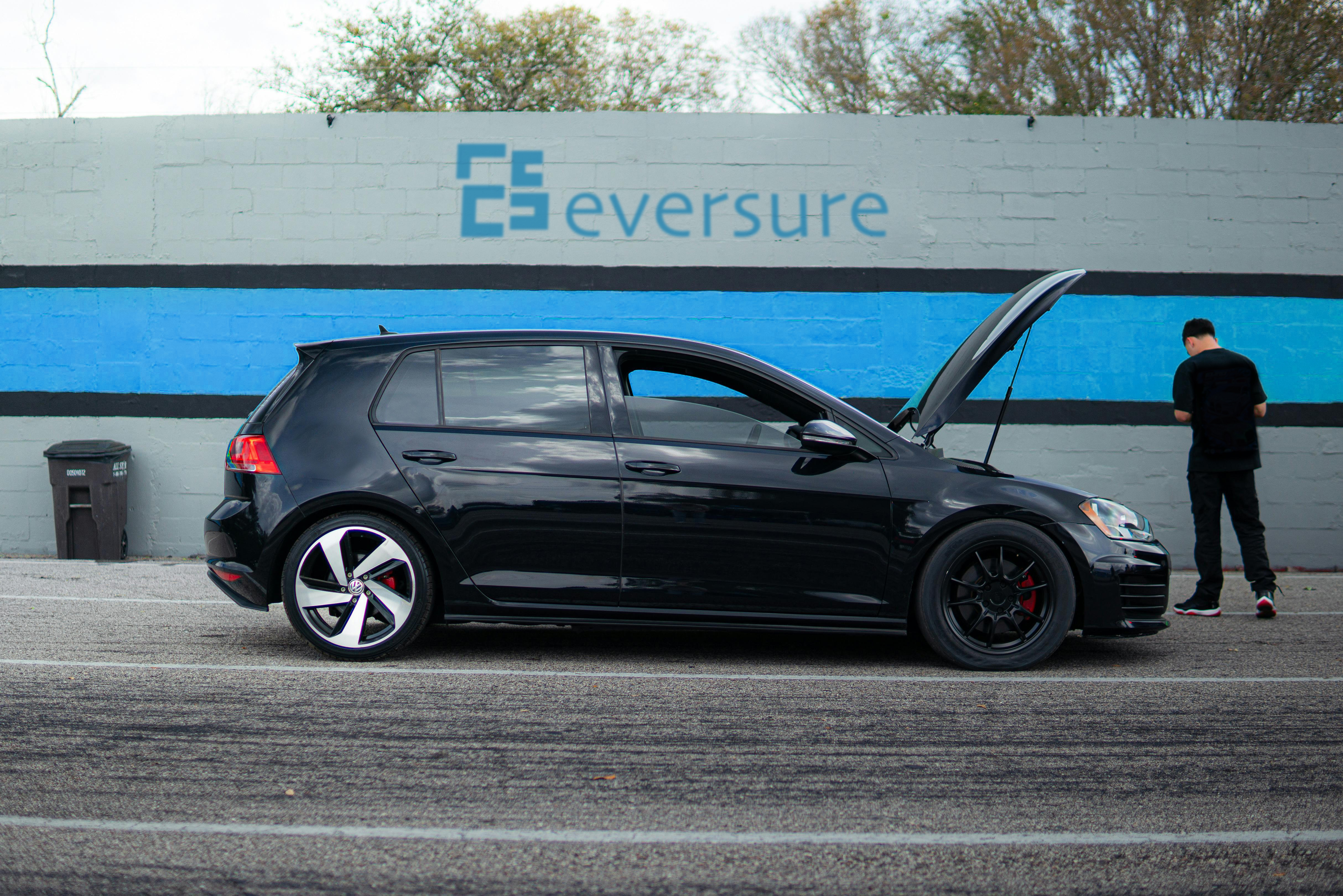
I've broken down in a car park. What do I do?
Breaking down in a car park is a common but safe place for a vehicle break down and is often due to issues like flat batteries, locked keys, or punctures. Here is what you should do:
1. Call for assistance
Contact your breakdown provider to ask for help.
2. No need to turn on hazards
Unless you are causing an obstruction in the car park, there is no need tot run on your hazard lights.
3.Find a clear meeting spot
Leave your vehicle and wait by the car park entrance to meet the mechanic. Or you can arrange a clear meeting point when you talk to the mechanic. This will help them to find your car more easily in a crowded car park.
4. Or open the bonnet
If you would rather stay in your car, open your bonnet to make your car more visible.
5. Check your car parking ticket
Make sure you still have enough time on your parking ticket. If you don’t, notify the parking attendant or contact the service (such as Ringo) if you paid electronically.
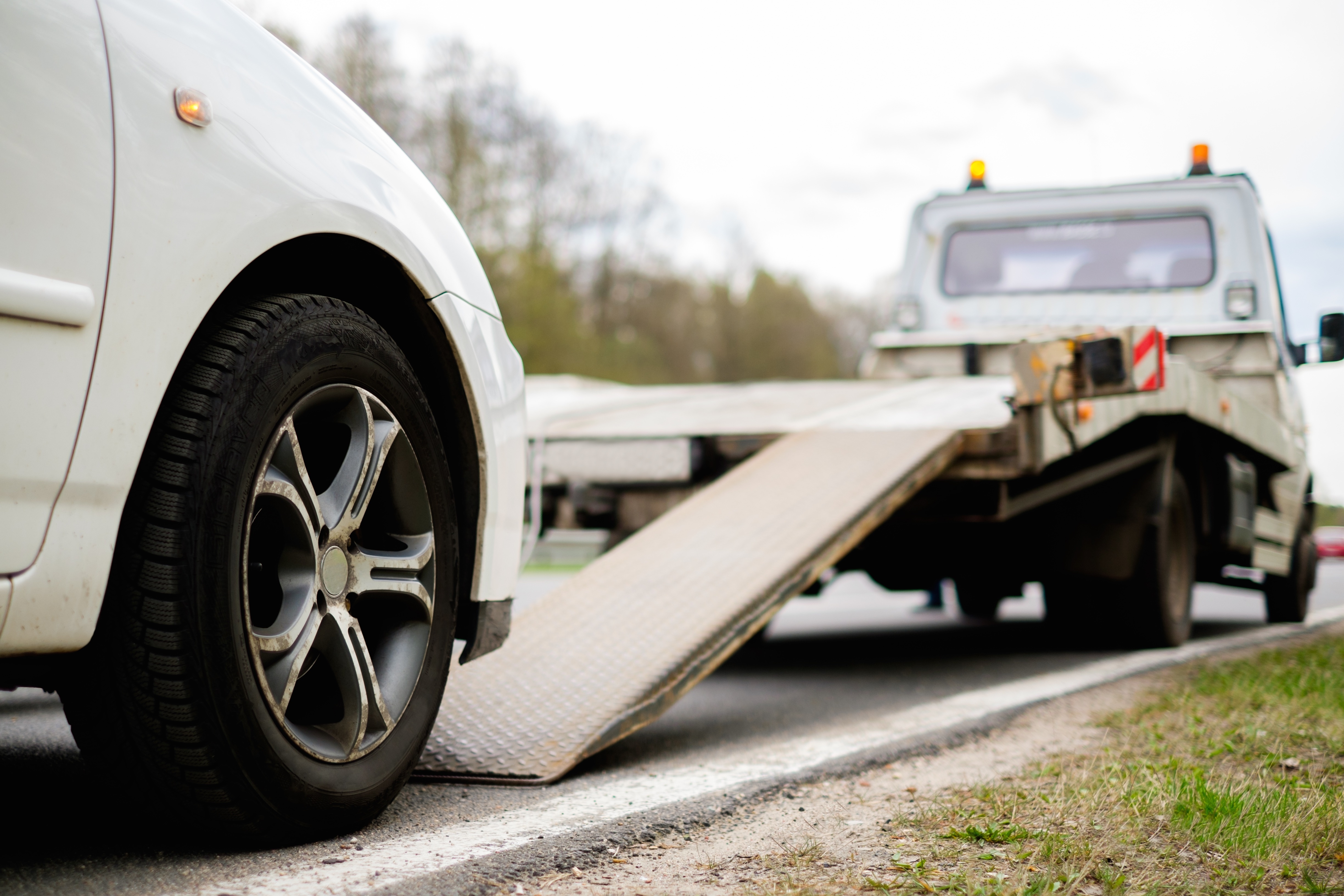
I've broken down in a town/city. What do I do?
Breaking down in a town or city can be stressful due to heavy and condensed traffic. Follow these steps if you break down in a busy town or city:
1. Stay calm and assess the situation
Try to stay calm and evaluate the surroundings. Look for a place to stop like the side of the road or a carpark. If you can, move your vehicle out of the way of traffic. If you are on a busy road, pull into a side street, car park or less congested area to minimise disruption to traffic flow.
2. Turn on your hazard lights
Activate your hazard lights immediately to alert other drivers to your situation. This will help prevent accidents and make your vehicle more visible to other road users.
3. Stay inside your vehicle
If you are on a busy road, it is safest to stay inside your vehicle with your seatbelt fastened. If you’re on a quieter road or in a safer area, you can exit the vehicle but stand away from the traffic.
If you step outside your vehicle, wear a high-visibility jacket to make yourself more visible. Also place a warning triangle behind your car to alert other drivers.
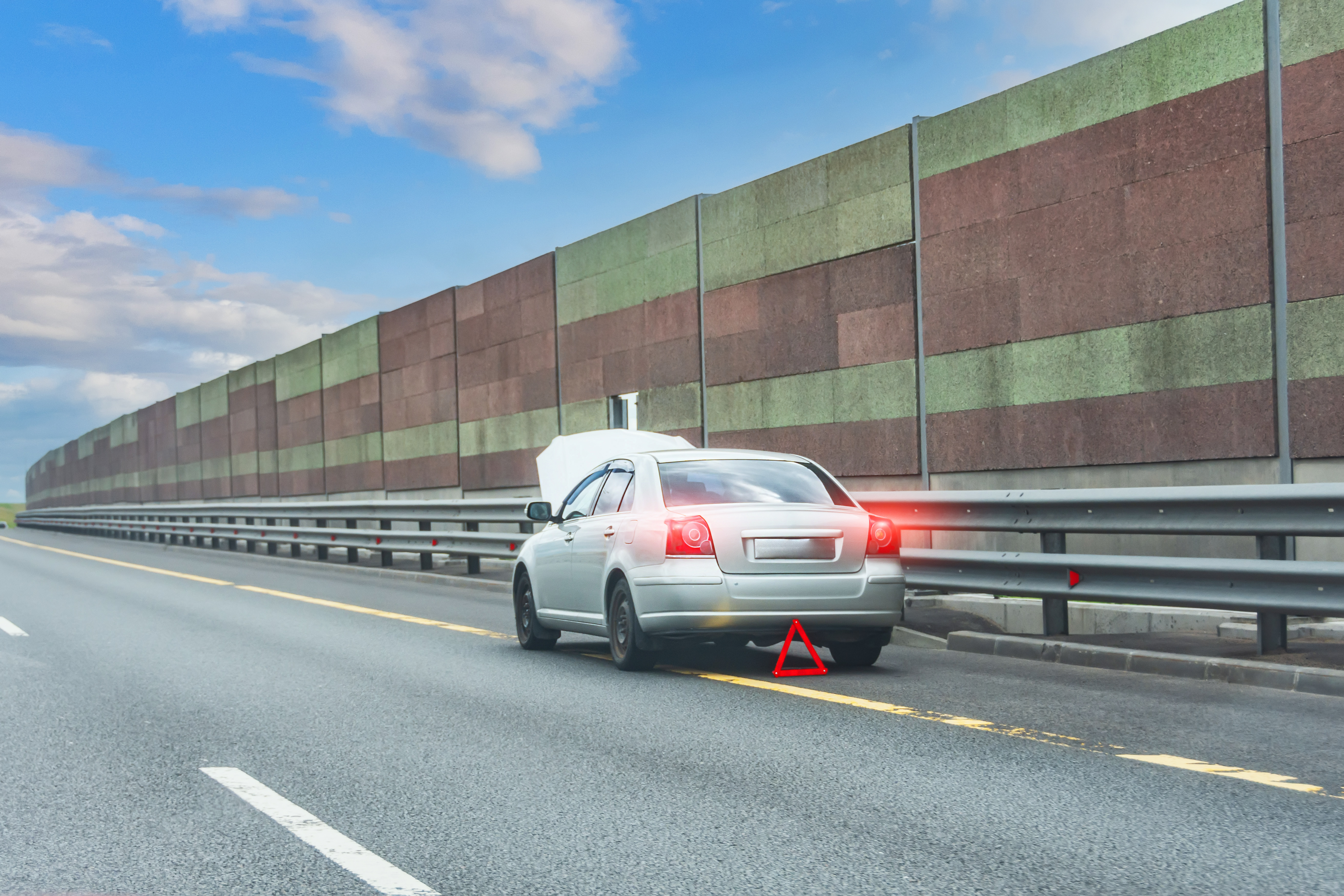
I've broken down on an A-road/dual carriageway. What do I do?
It can be hazardous braking down on an A-road or a dual carriageway due to the fast-moving traffic but stay calm and following these steps will help ensure your safety:
1. Pull over safely
Move your vehicle as far to the left as possible, ideally onto the hard shoulder or a lay-by.
If there’s no hard shoulder, try to stop in a safe place such as a wide verge or an emergency refuge area if available.
2. Turn on your hazard lights
Activate your hazard lights immediately to alert other drivers. If visibility is poor or it’s dark also switch on your sidelights.
3. Exit the vehicle safely
Exit the vehicle using the left-hand doors to avoid stepping into traffic.
Take all passengers with you and guide them to a safe location away from the road, such as behind a barrier or up an embankment.
4. Avoid the carriageway
Never stand in the carriageway or attempt to cross it. Stay well away from moving traffic.
5. Use a warning triangle
If it is safe to do so, place a warning triangle behind your vehicle to alert divers. Do not place it if it would put you in danger.
6. If you are stuck in a live lane
If you cannot leave your vehicle because it is unsafe, stay inside with your seatbelt fastened.
Ring 999 to report your situation and provide your location.
Avoiding Breakdowns
Breaking down can be caused by multiple reasons that are often avoided. To avoid breakdowns in the future, do the following:
- Thoroughly check your car before particularly long journeys.
- Get timely MOTS and regular car services so any issues with your car can be spotted and rectified before it’s too late.
- Look after your vehicle and get unexpected issues fixed in a timely manner.
Learn more about the importance of servicing your car in our article.
If you do breakdown, please remember to not attempt any repairs yourself.
Final Thoughts
Much of the advice for handling a breakdown is universal. Always prioritise safety: only exit the vehicle if it is safe to do so, and always leave from the left-hand side. Place a warning triangle at a safe distance behind your vehicle and wear a high-vis vest for added protection. Then contact your breakdown service provider for assistance.
Get breakdown insurance with us today! With our coverage, you can drive with peace of mind, knowing that if you do have to face braking down, you can do so with confidence.